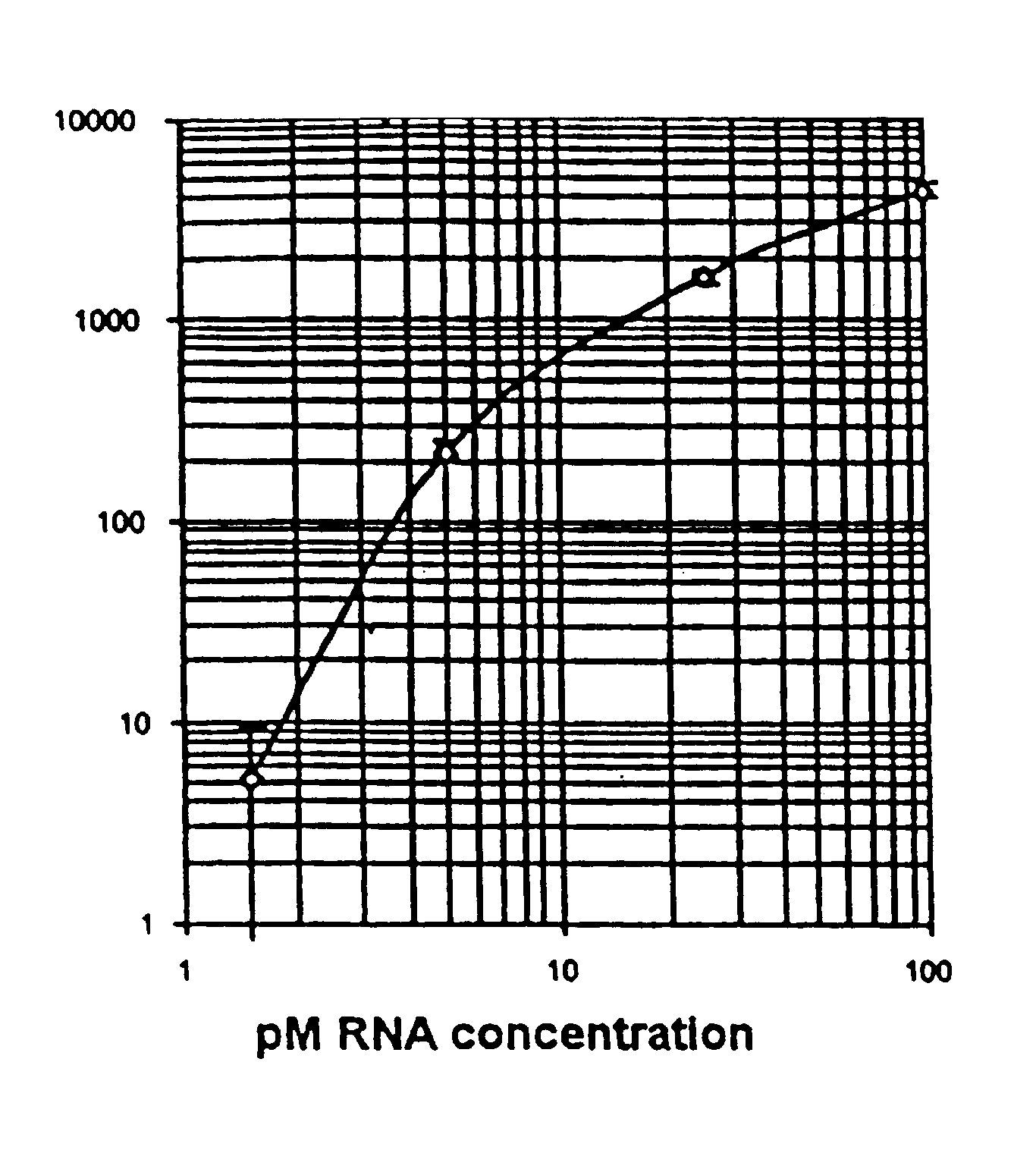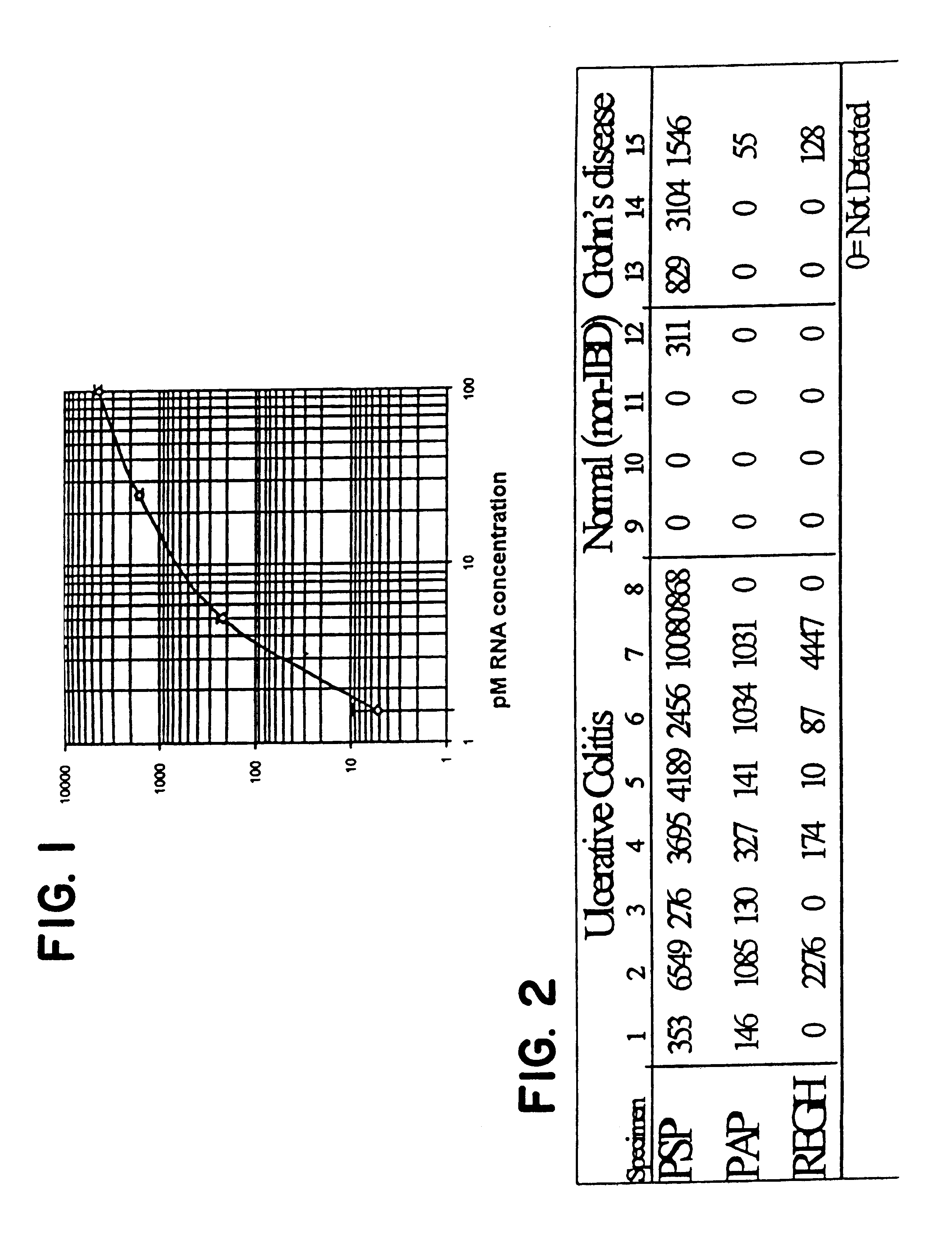Gene markers for chronic mucosal injury
a gene marker and chronic mucosal injury technology, applied in the field of chronic mucosal injury gene markers, can solve the problems of high cost, difficult clinical assessment of disease activity in ulcerative colitis or crohn's disease, and similar difficulties in measuring or testing the efficacy of new therapeutic compounds, so as to reduce ulcerative colitis and gene expression. , the effect of reducing the expression of genes
- Summary
- Abstract
- Description
- Claims
- Application Information
AI Technical Summary
Benefits of technology
Problems solved by technology
Method used
Image
Examples
example 2
Pichia pastoris expression vectors were constructed with PSP, PAP, and REGH. Gene-specific primer pairs were designed to incorporate a 5' Xho I site, and a portion of the .alpha.-factor gene leading up to the yeast Ste13 cleavage site (5' end) and a Xba I containing primer that deleted the stop codon and included a 3' Myc epitope tag. After Kex2 and Ste13 signal cleavage by Pichia, the amino-terminus should be identical to the native secreted protein. RT-PCR was performed using the TITAN One Tube System (Boehringer Mannheim). The PCR products of these reactions, using RNA from a healthy or UC patient are shown in FIG. 3. These results demonstrate trace amounts of PAP in the "normal" patient examined, but otherwise agree with the results of the GENECHIP hybridization. Bands were gel purified and cloned into pGEM-T (Promega). The Xba / Xho gene fragments were excised and ligated into pPICZ( (Invitrogen). Constructs were bidirectionally sequenced with primers derived from the vector and ...
example 3
PSP, PAP, and REGH were expressed in Pichia pastoris. PICZ.alpha. places the inserted gene downstream of a strong methanol-inducible AOX1 promoter. Individual clones were grown in 10 ml cultures of BMGY media overnight and resuspended into 1 / 5 volume of BMMY (0.5% methanol) for induction. Aliquots of media supernatant were taken at various times after methanol induction and subjected to 15% SDS-PAGE. PSP or REGH expression was identified by the new appearance of 18 and 18.5 kDa bands (respectively), peaking 48 hours after induction. These sizes include the 2.5 kDa C-terminal epitope tag, whose presence was verified by Western blot (ECL) utilizing a monoclonal anti-Myc antibody (Invitrogen). Tryptic digestion of both PSP and REGH led to a mobility reduction of about 1 kDa, reflecting the expected size change following cleavage at the Arg11-Ile12 bond (data not shown). PAP expression was also demonstrated.
Large scale protein purification was performed by directly scaling up the protoc...
PUM
| Property | Measurement | Unit |
|---|---|---|
| volume | aaaaa | aaaaa |
| Northern blot assay | aaaaa | aaaaa |
| time | aaaaa | aaaaa |
Abstract
Description
Claims
Application Information
 Login to View More
Login to View More - R&D
- Intellectual Property
- Life Sciences
- Materials
- Tech Scout
- Unparalleled Data Quality
- Higher Quality Content
- 60% Fewer Hallucinations
Browse by: Latest US Patents, China's latest patents, Technical Efficacy Thesaurus, Application Domain, Technology Topic, Popular Technical Reports.
© 2025 PatSnap. All rights reserved.Legal|Privacy policy|Modern Slavery Act Transparency Statement|Sitemap|About US| Contact US: help@patsnap.com


